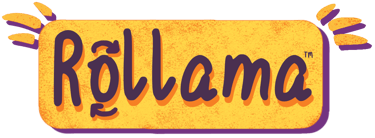The problem that took 18 months to solve
How a particular problem. in 2021 led me to change career
In 2021, I had a problem in my Year 6 classroom.
The students had a great attitude, and support from home was good. The peer group culture was positive, and their social bonds were solid.
These were multi-lingual learners with no shortage of ‘21st Century Skills’, whatever that means.
The classic ‘lovely class’.
The facilities were fine, and we were luckily in a place that was not locked down for online learning.
In almost every way, I counted myself lucky to have such a group, and I know many teachers would happily trade places.
Yet the issue nagged at me like a stone in a shoe. If I could have solved this issue, I felt I could have a significant impact on their progress.
They had learned to run before they could walk. Their writing was full of ideas and imagery but gave me a headache to read.
They hadn’t mastered ‘The Basics’.
The Basics
It’s an exaggeration for me to say that their writing was bad, but their control of commas, full stops, capitals, and verb tenses was A Problem.
It was holding back their writing and restricting the fluency of their content.
Primary Teachers have an uncanny skill for reading what the writer intended to say, rather than what is actually written. It is a skill perhaps unmatched in all professions except pharmacists reading doctor’s handwriting.
My problem was not helped by the fact that the English as an Additional Language (EAL) department had been disbanded, and my class – like most others in the school – was over 75% EAL learners.
I should say before I go on — I am in awe of the achievements of multi-lingual students, so please don’t take the impression that I am criticising; it is incredibly impressive, and what an amazing benefit to communicate in a range of global languages.
Now, the definition of what level of EAL requires external support is debateable. Most of my class spoke another language at home, but their English was at least functional and not a barrier to learning. Perhaps fewer than half a dozen would have benefited from regular external support rather than the normal classroom environment.
At that point, EAL was everyone’s job.
But without a dedicated team to help, the challenge for teachers was to find the best resources to address the issues we faced.
Of course, there are textbooks of English grammar exercises, and it’s a core part of the English curriculum, but I needed something which engaged and turned written fundamentals into a mission this class wanted to tackle on a regular basis.
No one leaps out of bed to learn about full stops, most certainly not at age 11, when teachers have been reminding you about the same thing for five years.
No one enjoys editing verb tenses more than writing the content of a great action sequence.
To solve the issue, I got creative.
I created the product I needed but which didn’t exist:
A classroom tool to make SPaG exercises quick and fun.
Independent games that students will beg to play. Healthy competition between peers to drive learning of the trickier parts of English.
And what started as a simple classroom tool (shoddily built DIY in Excel at first) has grown over the past 18 months into an ecosystem of 160 SPaG games covering every aspect of grammar, punctuation, and spelling in the English National Curriculum.
